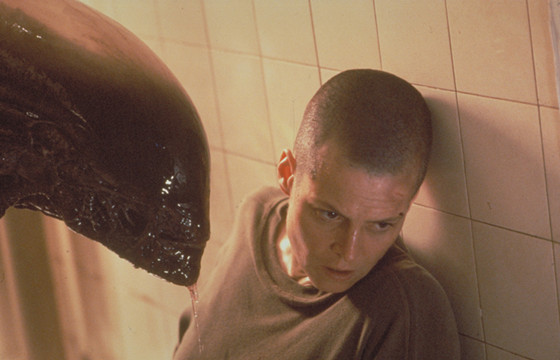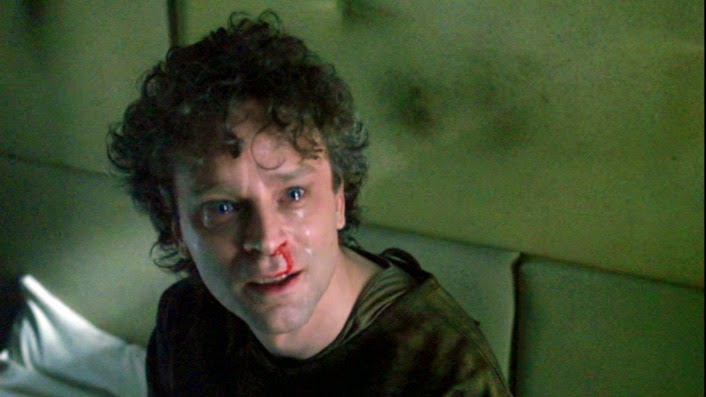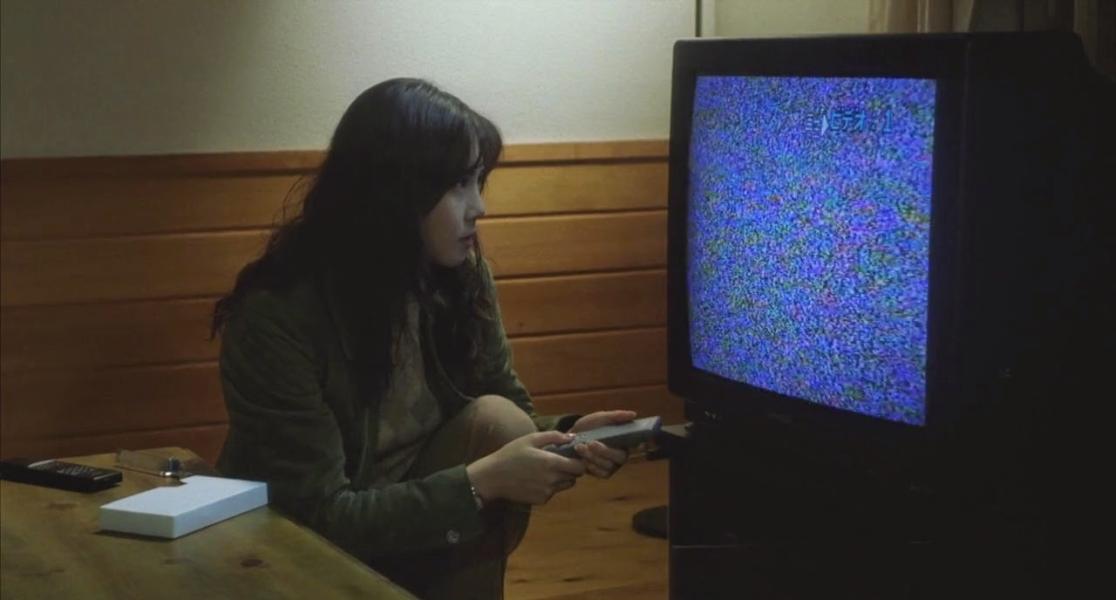6. A Nightmare on Elm Street 2: Freddy’s Revenge (1985)

While “A Nightmare on Elm Street 2: Freddy’s Revenge” initially intended as a straight sequel to the previous year surprising box office success, it ended up being the greatest and, arguably, the first gay horror film. But first, let’s take a look at its weak spots.
The first problem with the movie is its subtitle. “Freddy’s Revenge” wasn’t the first film about Freddy killing the children of those who claimed his life? Wouldn’t that subtitle have much more sense, if we had Nancy in the movie? “The Revenge” subtitle had much more sense in the fourth instalment of “Jaws”, but not here.
The second problem with the movie is that the main point of the first film was Fred Kruger being a maniac stalking and killing people in their dream. Freddy has absolute control over the dream world, but he’s ultimately useless in the real world. Why on Earth would he want to get into the real world?
That’s the basic premise of “A Nightmare on Elm Street 2: Freddy’s Revenge” – Freddy is trying to possess the body of Jessy, the main protagonist of the film, to get into the real world. Basically, that’s what had made the film the black sheep of the franchise. Now, let’s take a look at what made this movie an underrated sequel with a considerable cult following.
“Freddy’s Revenge” is an odd film, first of all, because it feels like the movie tries its best to break the rules created by Wes Craven in the original film. Then comes the homosexual subtext, which, according to different members of the cast and crew, was either intentional or unintentional.
Mark Patton, who portrayed Jessy Walsh in this instalment, is considered to be the first male scream queen, thanks to his high-pitch screams in the movie. His character seems to be a closet gay, with Freddy trying to free his gay side. That’s how gay audiences interpreted the movie. And it is extremely hard to find arguments against this theory when you are watching this movie.
The film grossed $30 million on $3 million budget, besting the box office results of the original film. Still, going out of the dream world was deemed a wrong choice, so Freddy returned to killing teenagers in their dreams in the further sequels.
Still, while many prefer skipping this entry in favour of the next sequel “Dream Warriors”, “Freddy’s Revenge” has its special place in the franchise. When your movie manages to stand out thanks to its oddity in the franchise that is known for its oddities, it’s a success without a doubt.
7. Alien 3 (1992)

“Alien 3” is often labeled as a black sheep of Alien-franchise. It is frequently compared negatively to the preceding films. Roger Ebert complimented the movie, but in a rather humiliating way, calling it one of the best looking bad movies that he’s ever seen.
“Alien 3” had everything for turning-out bad or half-baked at least, from the very start. More than ten screenplays were considered for the movie, some of them containing Ellen Ripley, some of them not.
Some screenplays were about xenomorphs on Earth, others were about Ripley trapped on the wooden planet, inhabited by monks who consider xenomorph to be the devil. In the end, the franchise’s producers David Giler and Walter Hill managed to write a screenplay that borrowed certain elements from the scripts that were considered previously.
The troubled production didn’t end there. “Alien 3” was the debut film for David Fincher, who previously worked as a music video director. Fincher and 20th Century Fox had tense relationship. “No one hated it more than me; to this date no one hates it more than me”, says Fincher about the movie.
There are two versions of the film – the theatrical version and the “Assembly Cut”. The “Assembly Cut” runs almost 40 minutes longer than its theatrical counterpart, and reveals more about the story, and probably is closer to the original film direction.
While one can easily understand why the movie, despite being a box office success, experienced lukewarm reception from the fans. The generic action sequences of James Cameron’s “Aliens” are nowhere to be found. “Alien 3” is closer to the first film, but it doesn’t have the same sinister effect, as viewers know too well what is going on. Still, the movie as better than it is considered.
The movie accomplishes working on the themes that were later brought up in “Alien Covenant” (2017) more successfully. You have the same themes of religion and the helplessness of humans in the space. But the fact that characters are not as dumb, as in the prequel makes the differences.
“What makes you think they’re gonna care about a bunch of lifers who found God at the ass-end of space?”, this Ripley’s quote from the movie easily sums up the atmosphere of “Alien 3”.
Helplessness and hopelessness are the main topics of “Alien 3”, and it is perfectly shown at the film’s climax, as after everything that Ripley had gone through, she realizes that the only way to destroy xenomorph is to sacrifice herself.
All in all, despite its troubled production, “Alien 3” doesn’t seem convoluted, wrong-paced or out of place. And it works as the perfect conclusion of the franchise, regardless of all the sequels, prequels and crossovers that followed.
8. Child’s Play 2 (1990)

“Child’s Play 2” suffers from the fact of being a sequel. The first entry in the franchise has a score of 67% on Rotten Tomatoes, while all the next instalments go down spiral from 40% to 23%.
“Child’s Play 2” was a box-office success, grossing over $35 million against its $13 million budget, but it was met with the lukewarm critical reception, with reviews claiming that the movie repeats the best elements from the original film to utter numbness. But that’s not true, as it was the sequel that became the staple for the franchise.
“Child’s Play” (1988) feels like it doesn’t know whether it wants to be more of a horror film or a comedy. “Child’s Play 2” on a contrary maintains the balance. It includes a few silly and over-the-top kills, but it was the sequel that finally provided viewers with what they were craving for – multiple deaths of Chucky that brings complete satisfaction.
9. The Exorcist III (1990)

Sometimes, even the return of the author of the original film can’t help the sequel to avoid lukewarm reception. That exactly what had happened to “The Exorcist III”. Despite the fact that the movie was written and directed by William Peter Blatty – the author of “The Exorcist” novel, as well as the writer and producer of the original movie – the disaster of the movie “Exorcist II: The Heretic” (1977) was affected the both the box office performance and the critical reception of the third entry in the franchise.
The movie is based on Blatty’s novel “Legion”, which, despite being a sequel to “The Exorcist”, doesn’t involve exorcism. It follows the first film character Lt. Kinderman, who investigates the series of ritualistic murders that occur 17 years after the events of the original movie.
The first conflict between Blatty and Morgan Creek Entertainment concerned exorcism. The studio demanded to include the scene of exorcism in the movie, while Blatty rejected the idea. But in the end, Blatty agreed.
Morgan Creek Entertainment also opted to name the movie “The Exorcist III”, to which Blatty also objected, regarding what the flop that the second instalment was. Blatty initially opted for the movie having the same title as the novel it was based on, but the studio went on with “The Exorcist III”. The movie was a box office success, grossing $39 million against $11 million, but received mixed reviews.
So, the movie experienced lukewarm critical reception because of the previous sequel and the studio’s intervention into direction? Basically, yes.
“The Exorcist III” is closer to the atmosphere of the first movie, it is dark and sinister, and it is more of a detective thriller, rather than a straight-forward horror story. At the same time, the film has a lot of scenes that would give you creeps, including horrifying nightmare-sequences and beautifully crafted jump-scares.
The acting in the movie is superb, especially Brad Dourif portraying the villain of the film. Even the exorcism scene, which feels out of place, is brilliantly shot. For the fans of the original film, it is better to skip the second entry and go straight ahead for “The Exorcist III”.
10. Rasen (1998)

“Rasen” is not only underrated, but it’s a forgotten sequel to the J-horror classic “Ringu” (1998). It was shot back-to-back with “Ringu” with the same crew and sharing some cast members, but with a different writer and director. “Rasen” is based on the Koji Suzuki’s novel of the same name, which is a direct sequel to his novel “Ring” (1991).
Both movies were released simultaneously, but while “Ringu” (1998) became one of the most critically and commercially successful Japanese horror movies of all time, “Rasen” was struggling to find the audience and quickly became a forgotten sequel. The enormous success of the first novel adaptation led to a franchise being created, where “Ringu 2” (1999) – which was not based on Suzuki’s book – replaced “Rasen”.
The movie became an underrated sequel, but because of the marketing technic, rather than its quality. When you have an original film and its sequel released simultaneously, apparently you’re going to watch the first film.
Thus, marketing ploy made “Rasen” a stillborn sequel. It is now considered a non-canon in the franchise, despite the fact that it is a direct follow up to the first film. Actually, “Rasen” doesn’t work that great as a stand-alone film. It heavily relies on the viewer having watched the first film, which can also be the reason for its immediate death at the theatrical run.
Still, “Rasen” is a must-see for all J-horror aficionados. It’s an atmospheric and moody film, set right after the events of the “Ringu”, that goes deeper into the origins of Sadako Yamamura and the cursed videotape. And this film succeeds in breaking the ‘less is more’-golden rule of horror films. “Rasen” remains scary although Sadako has much more screen-time than in the first movie.